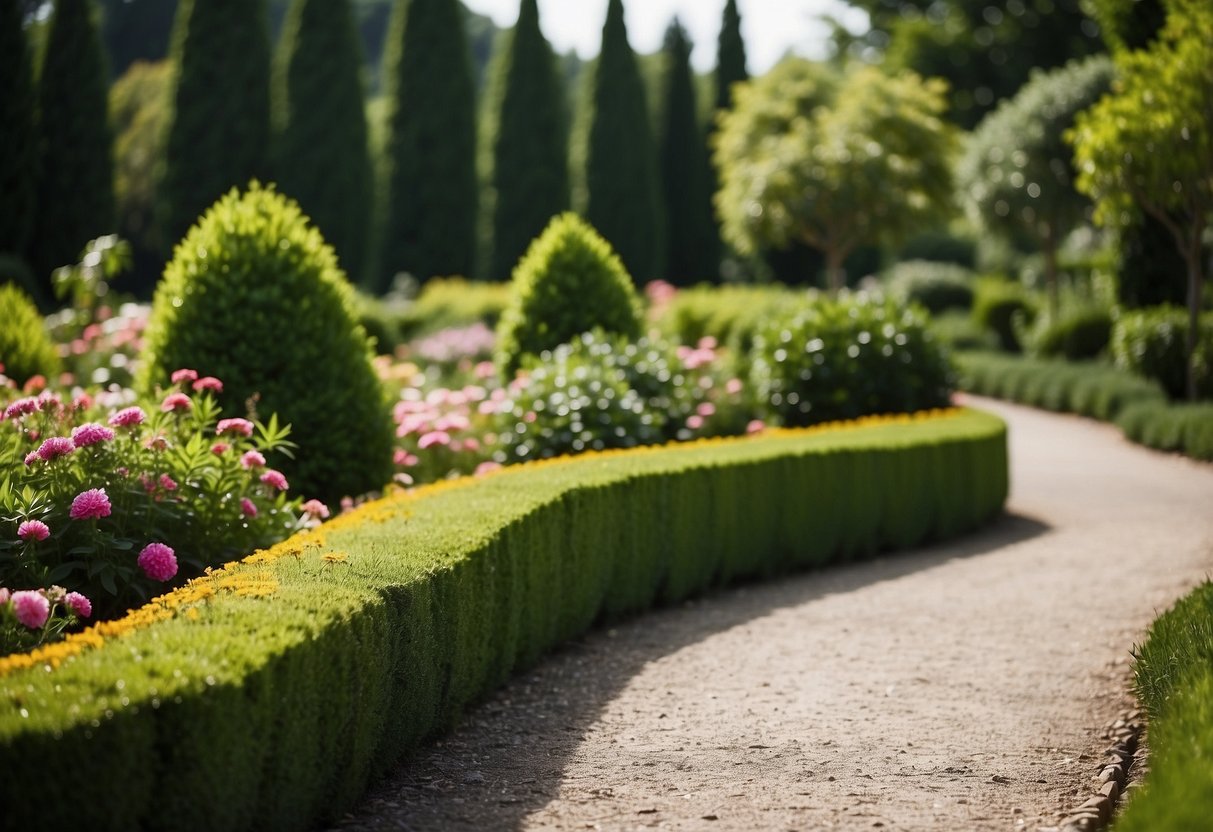Evergreen Front Garden Ideas: Transform Your Curb Appeal
Evergreens are a wonderful choice for transforming your front garden into a year-round oasis. They offer lasting beauty and structure, ensuring that your garden stays vibrant through all seasons. Whether you are looking to add privacy, create a lush backdrop for colorful plants, or maintain a neat and tidy appearance, evergreens can meet your needs efficiently.

You’ll find evergreens to be versatile and adaptive, fitting a range of landscaping styles and personal preferences. From compact shrubs to tall trees, they can be used to create focal points, border edges, or form natural screens. This article will share a variety of ideas to inspire your front garden design with evergreens, enhancing both its aesthetic and functional value.
Understanding Evergreen Plants

Evergreen plants keep their leaves all year long, making them a reliable choice for continuous greenery in your garden. They are both practical and beautiful, providing many benefits such as constant privacy and reduced garden maintenance.
What Are Evergreen Plants?
Evergreen plants are those that keep their foliage throughout the year. Unlike deciduous plants, which shed their leaves in autumn, evergreens offer consistent visual interest. Common types include pine, spruce, and certain types of shrubs like holly.
You can place evergreens in many parts of your garden, from hedges to focal points. They are also available in various shapes and sizes, making them versatile for different garden designs. Whether you use them for ground cover or tall privacy screens, their year-round foliage adds beauty and structure to your outdoor space.
Benefits of Evergreen Plants
Evergreen plants offer several benefits that make them a great addition to any garden. One major advantage is their ability to provide privacy. A well-placed evergreen hedge can create a natural barrier between you and the outside world.
They also reduce the need for constant garden maintenance since they don’t drop their leaves all at once. This makes cleanup much easier compared to deciduous plants. Additionally, evergreen plants can act as windbreaks, protecting your garden from harsh winds and reducing soil erosion.
Another benefit is the consistent color and texture they provide. During winter, when most plants have lost their leaves, evergreens maintain a vibrant, green presence, keeping your garden looking alive and healthy. They can also serve as a backdrop for other seasonal plants, enhancing the overall visual appeal.
Designing Your Front Garden

Creating an evergreen front garden can significantly enhance curb appeal and provide year-round beauty. Focus on selecting the right evergreen plants and balancing their colors and textures for a harmonious look.
Choosing the Right Evergreens
Selecting the right evergreens is crucial for a stunning front garden. Think about plant height, shape, and growth habits. For instance, boxwoods and dwarf spruces are perfect for structured, formal designs. These plants keep their shape and require minimal maintenance.
Consider using low-growing evergreens such as creeping juniper for ground cover. They add greenery without overshadowing other plants. For taller options, arborvitae or holly bushes can create natural fences and provide privacy.
Mixing different types of evergreens can add variety to your garden. Choose plants with different shades of green, from dark to light, to create depth and interest. Include evergreens with unique textures, like the spiky leaves of a yucca plant, to break the monotony.
Balancing Color and Texture
Balancing color and texture is key to a visually appealing garden. Evergreens are available in various shades, from deep green to blue-green. Incorporate evergreens with contrasting colors to create focal points. For example, pair blue spruce with golden arborvitae for a striking look.
Texture adds another layer of interest. Combine fine-textured plants like hemlock with coarse-textured plants such as magnolia to create a rich tapestry. Evergreens with needle-like foliage mix well with broadleaf varieties.
Arrange your plants to create layers. Place taller plants at the back and shorter ones at the front. This layering effect adds depth and makes your garden look more vibrant and full. Small touches like using mulch or placing decorative stones around the base of your evergreens can also enhance texture and visual interest.
By carefully choosing your evergreens and balancing their colors and textures, your front garden will be both beautiful and inviting year-round.
Maintenance Tips for Evergreen Gardens

Keeping your evergreen garden in great shape means regular pruning, dealing with pests and diseases, and monitoring plant health. These tasks ensure your evergreen plants stay lush and vibrant all year round.
Pruning and Trimming
Regular pruning is essential to maintain the shape and health of your evergreens. Use sharp pruning shears to remove dead or damaged branches. This allows sunlight to reach the inner parts of the plant, promoting healthy growth.
Create clear edges and neat shapes by trimming once or twice a year, depending on the growth rate of the plants. This helps maintain the tidy appearance and prevents overgrowth, which can lead to plant diseases.
Remember to trim during the right seasons. Early spring or late winter is ideal as plants are dormant, making it easier to shape them without causing stress.
Dealing with Pests and Diseases
Evergreens can fall prey to pests like spider mites and aphids. Inspect your plants regularly for signs of infestation, such as discolored leaves or visible insects. Use insecticidal soap or neem oil to treat these pests effectively.
Diseases like needle cast or root rot can also affect your plants. Keep an eye out for yellowing or browning needles and various fungal growths. If you notice these symptoms, remove the affected parts immediately to prevent spread.
Additionally, ensure proper watering and drainage. Overwatering can lead to root rot, while under-watering can make plants more susceptible to pests and diseases. Maintain a balanced watering schedule to keep your evergreens healthy and resilient.







